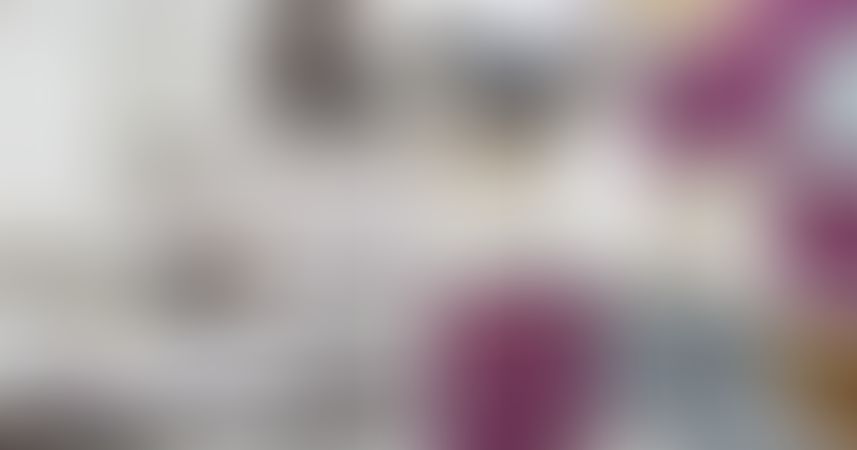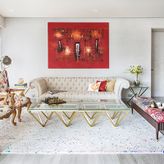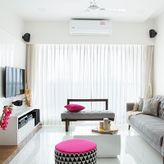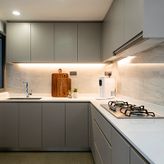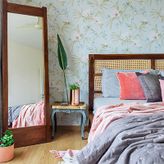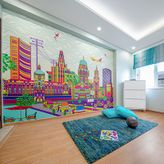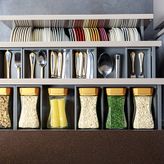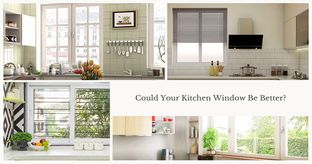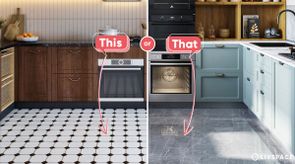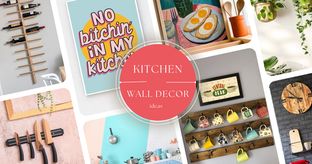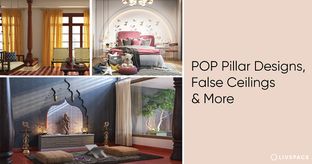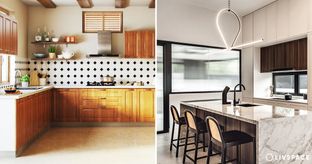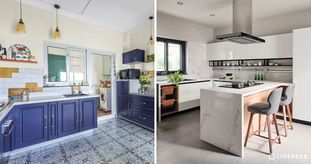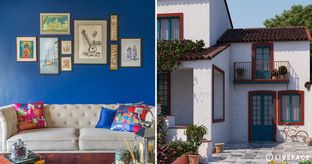In This Article
Wallpaper is a great design choice but, in the face of the other trends that take the world of interior design by storm, it’s an unsung hero. This is especially so in Indian homes which are often decked up in paint and patterns but not so much wallpaper.
Even when we do, the kitchen hardly makes an appearance – which is unfortunate! Trust us, it is prime real-estate for you to explore kitchen wallpaper designs.
Wondering whether kitchen wallpaper for walls is the right choice for you? This guidepost has the answers– from kitchen wallpaper designs, types of wallpaper, to how to put wallpaper up and everything in between, it tells all.
Part A: Kitchen wallpaper for walls
#1: Monochrome floral

For a sophisticated and timeless look, consider monochrome floral pattern kitchen wallpaper design. This combines the elegance of florals with the modern appeal of a monochromatic palette.
The absence of colour allows the intricate details of the modern kitchen wallpaper floral pattern to shine, creating a subtle yet impactful statement. Whether you prefer a soft, muted palette or a bold, graphic design, monochrome floral wallpaper can elevate your kitchen’s aesthetic while maintaining a sense of calm and sophistication.
#2: Backsplash accent
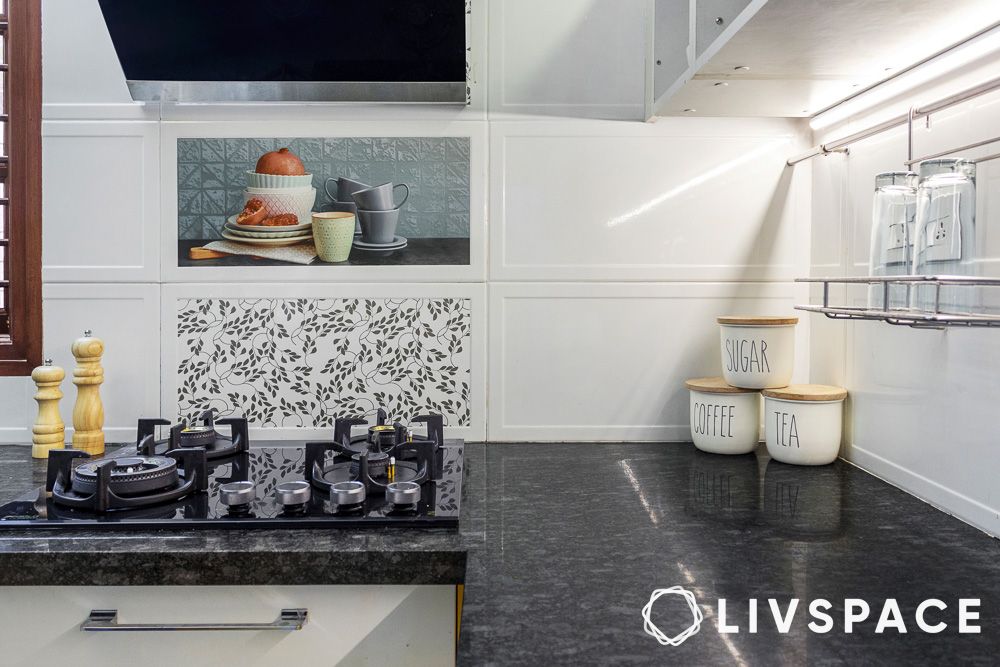
A unique and eye-catching alternative to traditional tile backsplashes, modern classy kitchen wallpaper designs can add a bold statement to your kitchen. By applying wallpaper to a section of your kitchen wall behind the countertop, you can create a focal point that complements your kitchen’s overall style.
Consider using a contrasting pattern or colour to make the kitchen backsplash stand out. This design approach offers endless possibilities for customisation and can instantly elevate the look of your kitchen.
Also Read: 25 Insanely Cool Accent Walls in Living Room
#3: Designs in white against colourful cabinets

For a vibrant and modern kitchen, consider pairing white wallpaper with bold-coloured cabinets. The neutral backdrop of the white wallpaper allows the vibrant hues of the cabinets to truly pop, creating a visually striking contrast.
Whether you opt for a geometric pattern, a subtle texture, or a minimalist design, the kitchen wallpaper design will complement the colour of your cabinets and create a sense of balance in the space. This design approach is perfect for those who want to make a bold statement in their kitchen.
#4: Design in white with white cabinets
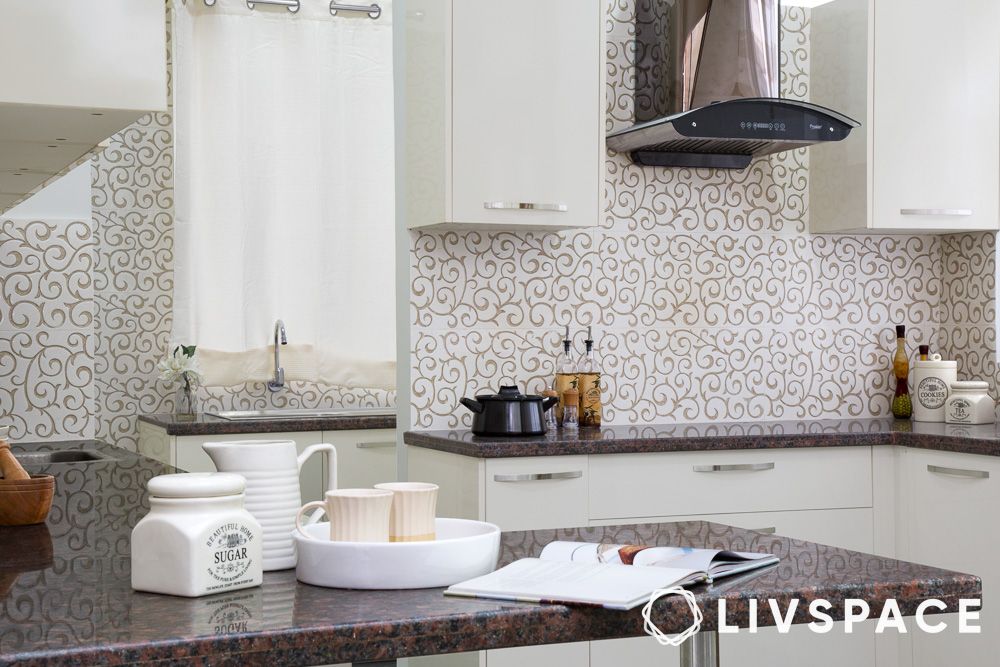
For a clean and minimalist aesthetic, consider pairing white kitchen wallpaper design with white cabinets. This monochromatic colour scheme creates a serene and sophisticated atmosphere in your kitchen.
The subtle texture and pattern of the wallpaper add depth and visual interest to the space without overwhelming it. To prevent the room from appearing too stark, incorporate elements of warmth through wooden accents, natural light, or pops of colour in accessories.
#5: Cottagecore summer themed wallpaper
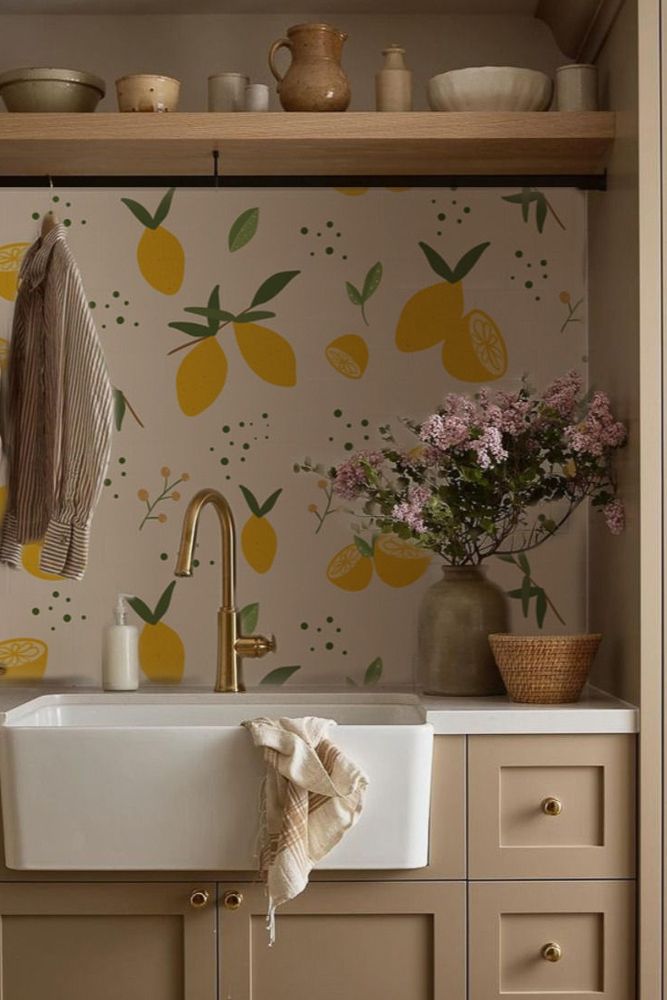
Image source: Pinterest @thecolorflow
Embrace the idyllic with cottagecore-inspired kitchen wallpaper designs. Charming botanicals and whimsical patterns in these modern, classy kitchen wallpaper design bring a touch of the countryside into your kitchen.
Think soft pastels, gentle hues, and nature-inspired motifs for a refreshing and inviting atmosphere. This kitchen wallpaper design trend pairs beautifully with wooden accents and natural light, creating a warm and welcoming kitchen space.
#6: Forest themed wallpaper with recessed lighting
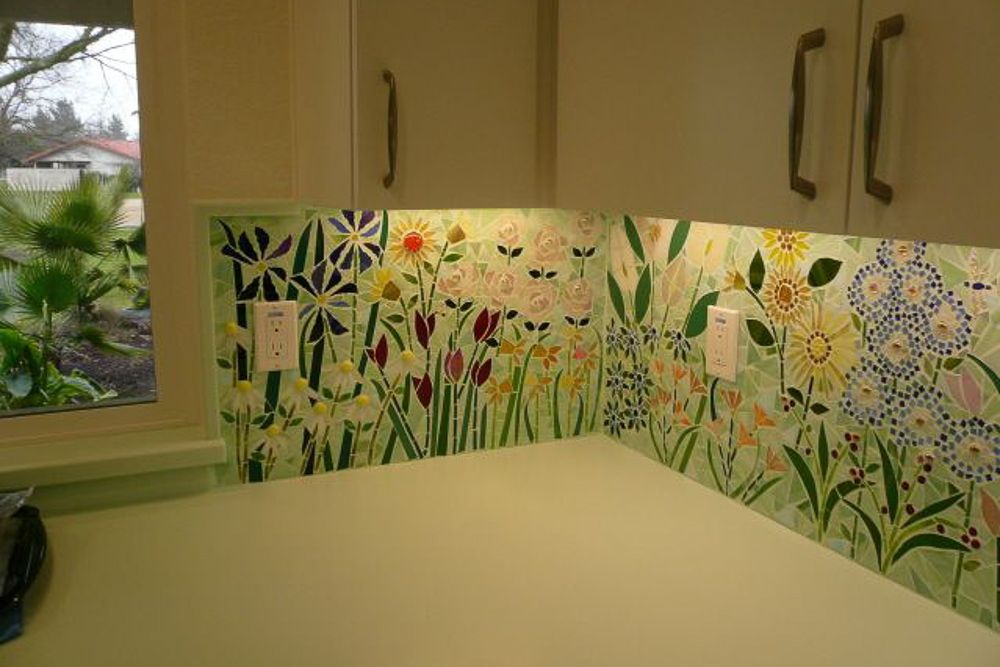
Image source: Pinterest @sandy0544
Escape to nature without leaving your kitchen with a forest-themed wallpaper. Lush greenery, towering trees, and dappled sunlight can be brought indoors through this captivating design.
For an even more immersive experience, incorporate recessed lighting to mimic the sun filtering through the canopy. This creates a tranquil ambiance, transforming your kitchen into a serene retreat.
Part B: How to buy wallpaper for home decor
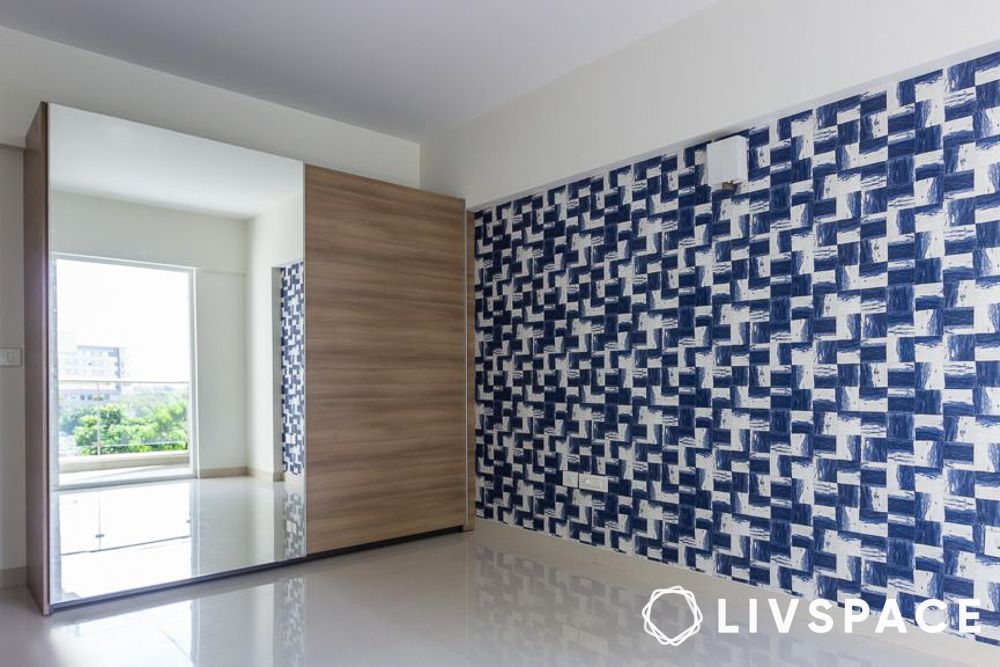
Choosing the right amount of wallpaper and estimating the amount you have to buy is a tricky process. To begin, narrow your sights down to the ideal wallpaper by looking at application, features and material.
Types of wallpaper: By application
Contrary to popular depictions, not all wallpaper needs a lengthy, rather glue-covered process to be installed. In a world of advancements, wallpaper home decor isn’t far behind– here’s a rundown of wallpaper types sorted by application.
Non-pasted wallpapers
This variety is the traditional type. It comes as a roll of paper without any glue backing. Decorators will need to buy glue separately and layer it on the back of the wallpaper to paste onto a wall.
Self-adhesive wallpapers
Just like stickers, this peel-and-paste wallpaper comes with pre-applied glue. All you need to do to get it on your wall is remove the backing paper.
Pre-pasted wallpaper
Pre-pasted wallpaper home decor doesn’t need paste to be applied, which is a blessing. All it takes is water to act as an adhesive against the surface of the wall. That said, this sort of wallpaper doesn’t last as long as the others.
Types of wallpaper: By material
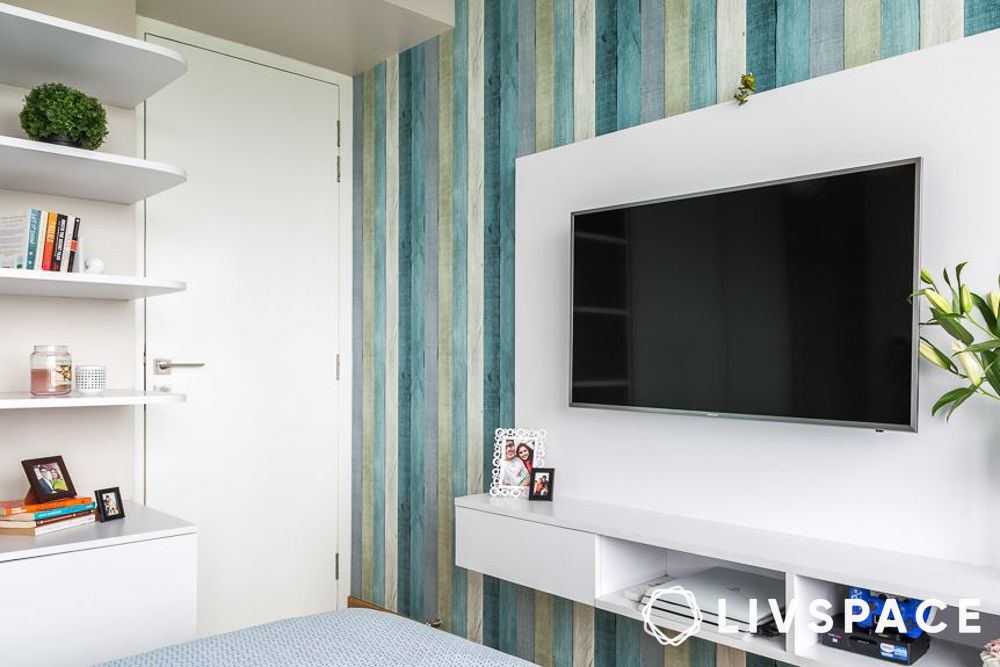
Wallpaper home decor is available in a variety of material options, each serving a different purpose and with its own pros and cons.
Paper wallpaper
Paper wallpaper is also called lining paper because it’s often used to ‘line’ walls and hide damages. It’s the more commonly known variety because it’s one of the oldest. Colours and patterns tend to show up best on paper wallpaper; it’s also easy to remove.
Vinyl wallpaper
Vinyl-coated wallpaper is a popular option because it’s easy to paste on walls and can be applied to damp areas without wrinkling.
Fabric wallpaper
This type of wallpaper is considered to most luxurious. However, it’s heavy to hang up and take down and requires a lot of paste to hold it up securely.
Types of wallpaper: By features
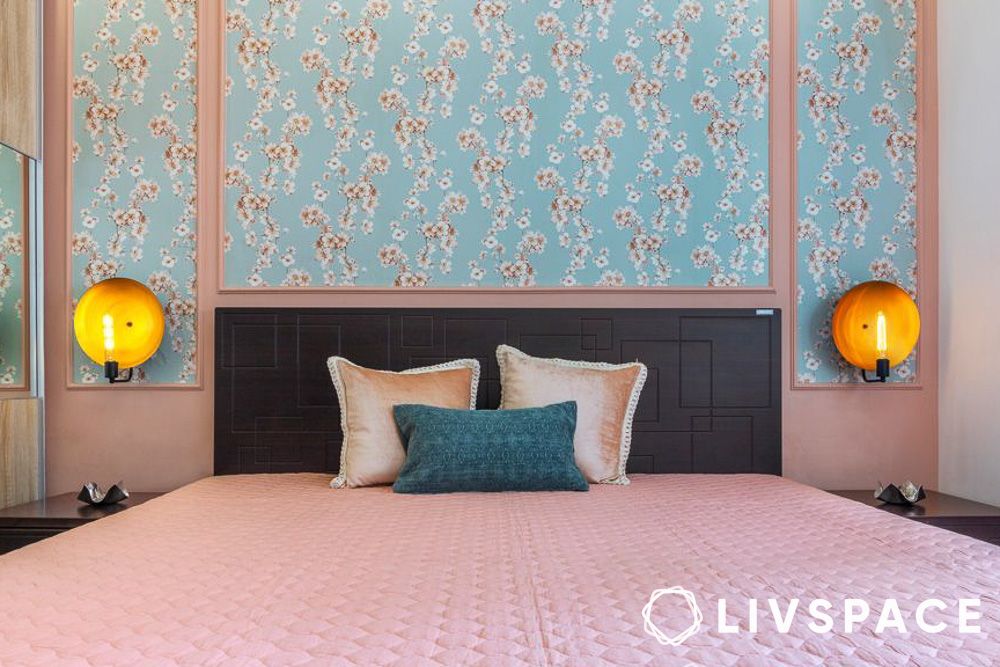
Unlike common assumptions that all wallpaper can’t stand the test of time, good quality wallpaper home decor comes with a laundry list of features.
Paint-friendly wallpaper
If the purpose of your wallpaper is to cover up damages yet fit in with the rest of your walls, paint-friendly wallpaper is your best bet. It’s thick and often has a textured surface– both perks because it’ll hold up under the weight of any paint choice.
Washable wallpaper
Homes with curious children and pets would benefit from this wallpaper option. You can wipe it down with water and a sponge to remove scribbles and stains without damaging the surface of the wallpaper.
Moisture-resistant wallpaper
This type of wallpaper holds up well in high-footfall areas that experience a lot of dampness and moisture, such as kitchens and bathrooms.
Here’s a pro tip– when deciding how much wallpaper to buy, it’s best to measure your walls first, round off the measurements and buy more than you actually need. This saves you from extra trips to the store should anything rip!
Types of wallpaper: By pattern
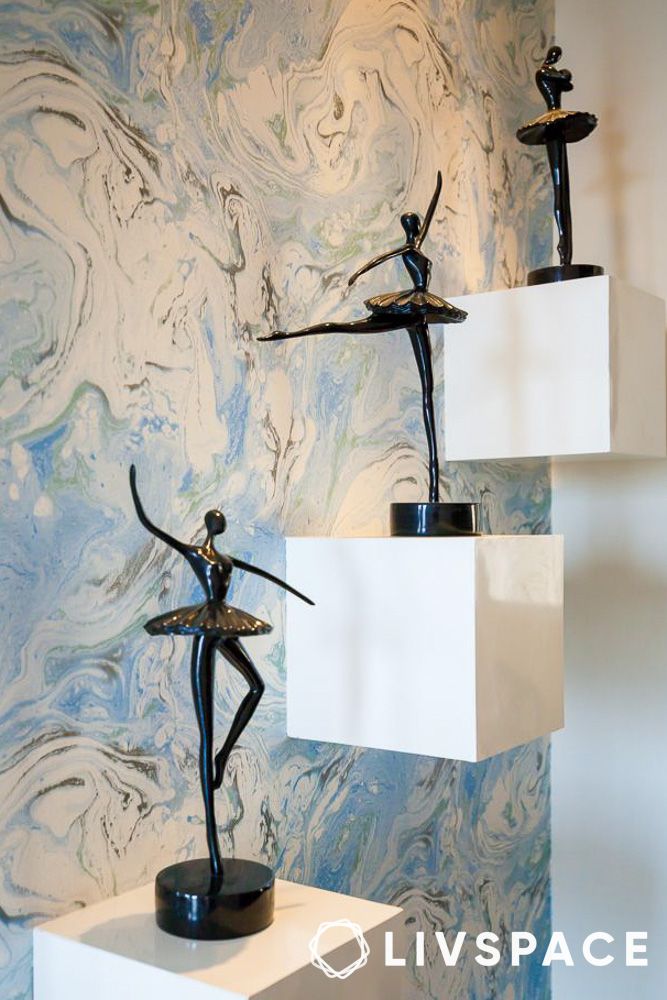
Patterns make for interesting additions to an otherwise plain room.
Randomly-Aligned Wallpaper Home Decor
With this type of wallpaper, you don’t need to worry about the pattern being aligned. Any random arrangement of the pattern will look intentional!
Drop match wallpaper
This is by far the most difficult type to hang up because it requires alignment of patterns both horizontally and vertically.
Straight aligned wallpaper
Not as difficult as drop match but still requiring more effort, straight-aligned or straight match wallpaper requires that you match the pattern vertically.
Part C: How to hang wallpaper for home decor
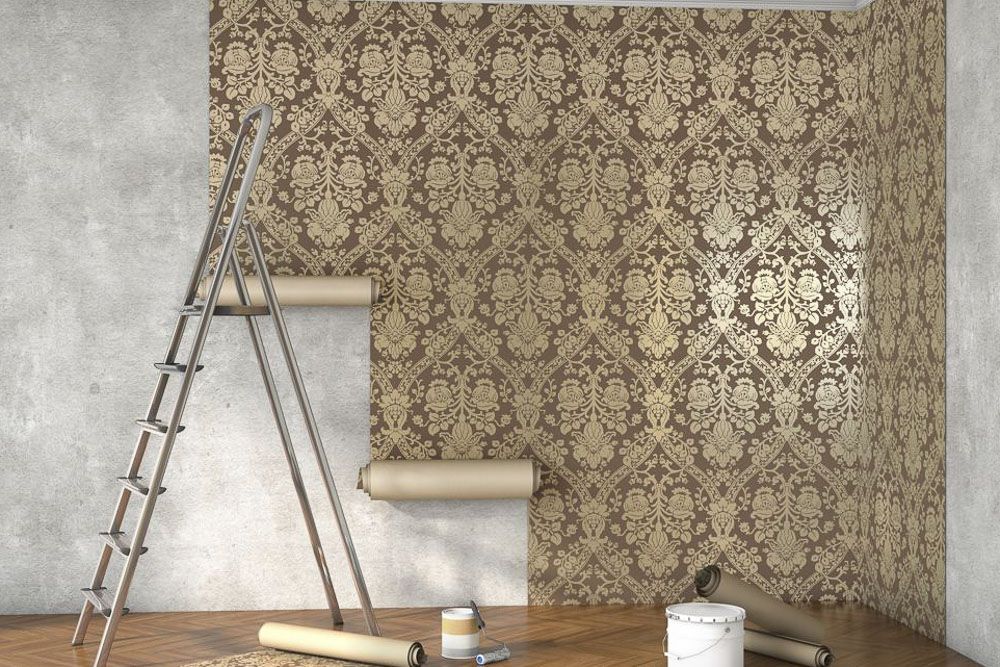
Once you’ve decided the type of wallpaper you’re going for, the next hurdles are hanging and maintaining it.
Clean the surface: Begin by sanding down your walls for extra grip and wiping them with a sponge and detergent– you don’t want hidden dirt to cause unsightly bubbles later on.
Get your measurements: Measure the length and width of the wallpaper strips and size them up against the wall. It’s always a good idea to draw lines on the wall beforehand so your wallpaper is level and there are no gaps. This will also allow you to identify how many strips you need and of what dimensions before you actually go in with the sticking.
Align the edges: If you’ve purchased a self-adhesive kind, you can now peel off the backing paper and align the top and side edges to the corners. If your wallpaper needs an external adhesive, then you’ll need to either apply the paste on the back of the paper or on the wall depending on the type of paste you’ve purchased.
Sweep downwards: Once your top corners are secured, use a wallpaper sweep to wipe down over the wallpaper, sticking it to the wall. You want to apply a lot of pressure and go over one area multiple times to reduce the chances of air bubbles.
Remove air bubbles: If air bubbles do appear, don’t fret– it’s part of the process. Use a pin to puncture the bubble and run over the area with the wallpaper sweep until it sticks firmly.
Part D: Maintaining wallpaper home decor
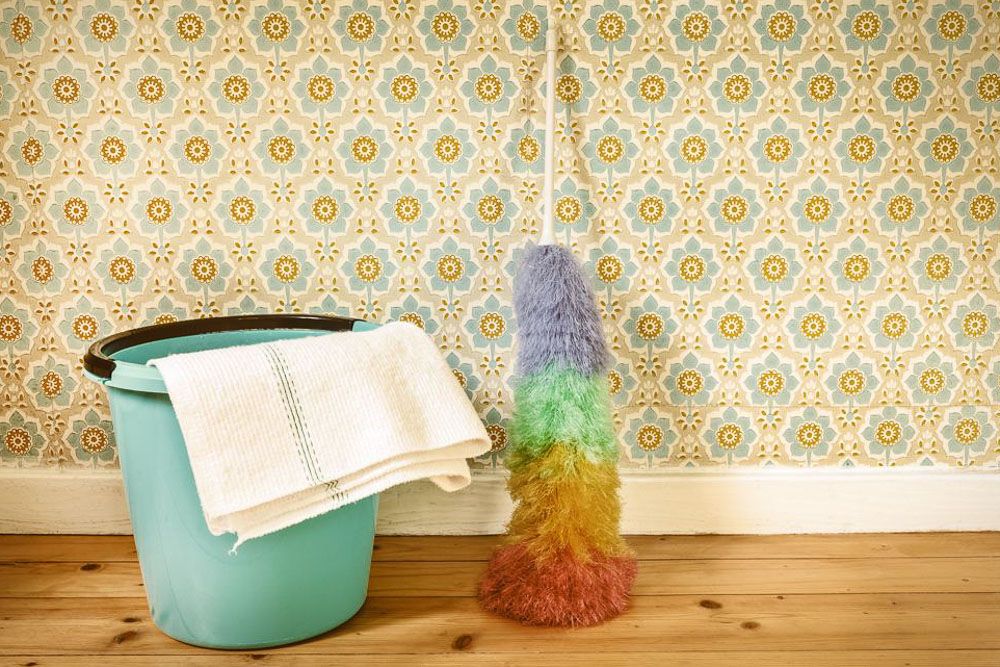
If you’ve purchased a washable kind of wallpaper, all you need to do is wipe it down on occasion to keep it clean. For non-washable variants, here are your options:
Remove dust particles: Use a dry cloth from bottom to top rather than top to bottom and in the direction of the vertical seams. Use a damp cloth on stubborn stains but take care not to scrub too hard or use too abrasive a cloth.
Tackle sections: It’s always better to clean section by section rather than in patches. This reduces the chances of going over the same area twice and ruining the wallpaper and is also more systematic!
Use only water: When cleaning wallpaper, avoid using abrasives, solvents or chemicals of any kind. At best, this will create an unsightly patch. At worst, it’ll take off a chunk of your wallpaper, leaving you with no choice but to paper over it or change the wallpaper entirely!
Pro Tip: If you’re using a damp cloth to wipe down your wallpaper home decor, take care not to leave the cloth on one spot for too long. If any moisture seeps into the wallpaper, it could result in air bubbles or cause the wallpaper to peel off in sections.
Part E: How to remove wallpaper in the right way
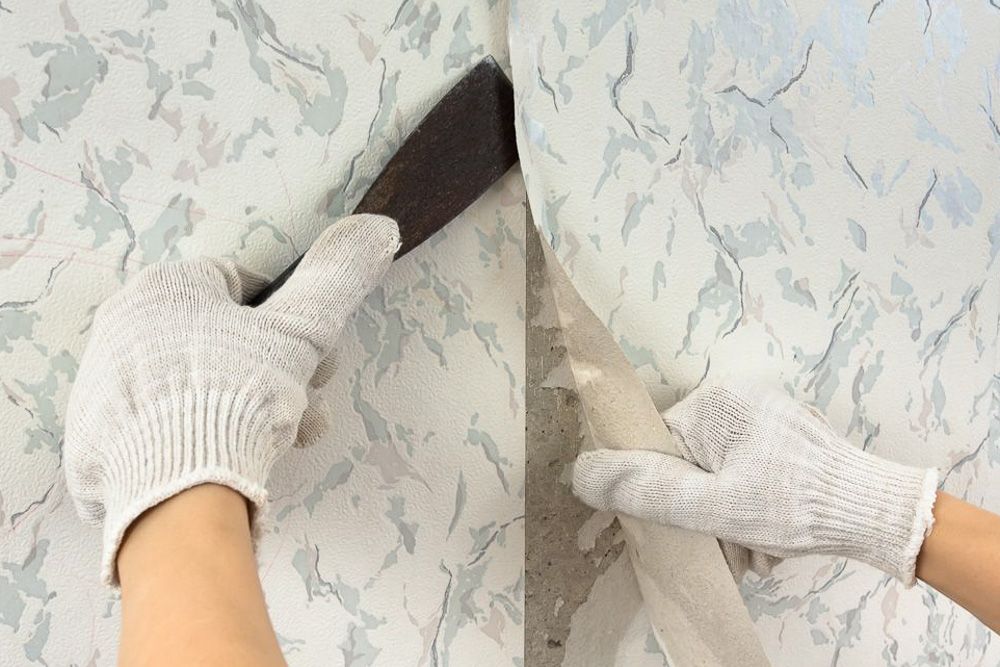
To remove wallpaper home decor entirely, you’ll need to get rid of both the strip layer and the peel layer.
Soak the wall: Begin by soaking patches of the wallpaper with a stripping solution mixed with water. Let it soak for 15 minutes and peel off the top layer from the bottom corner upwards.
Remove the lining paper: You can do this by scraping away at the paper with a scraping tool. If you want to keep the lining paper as a base for new wallpaper, ensure it doesn’t have any holes or missing bits.
Wipe the walls: Use a sponge dipped in a soapy solution to wipe off any wallpaper and glue bits that remain.
Pro Tip: If you plan to re-wallpaper or paint the room, leave it to dry for at least 24 hours before going in again.
How can Livspace help you?
We hope our article on wallpapers has helped you understand all you need to know. If you’re looking for ways to transform your house with custom designs, book an online consultation with Livspace today.
Our team of seasoned and creative designers is ready to collaborate with you to bring your vision to life.
- Our team can custom design your dream home with curated render designs and expert advice
- We have delivered over 75,000 happy homes
- We promise high-quality and durable materials
Disclaimer: The Pinterest images used in this blog are solely for illustrative purposes. We do not claim ownership of these images, and all rights belong to their respective owners. If you are the owner of any image and would like it to be removed or credited differently, please contact us. All contents of the story are specific to the time of publication. Mentions of costs, budget, materials, finishes, and products from the Livspace catalogue can vary with reference to current rates. Talk to our designer for more details on pricing and availability.
